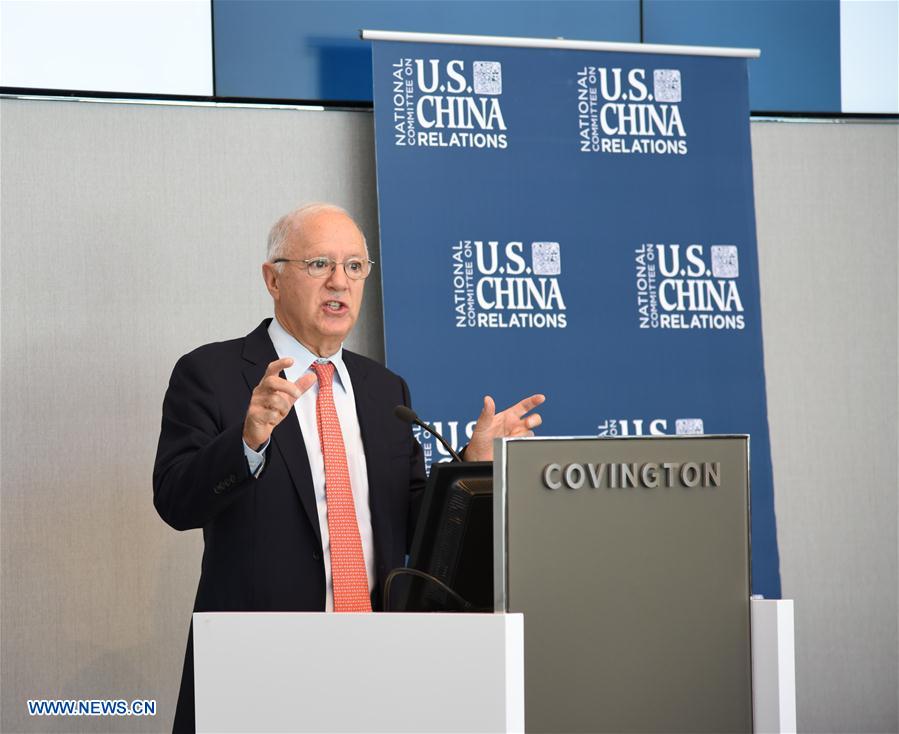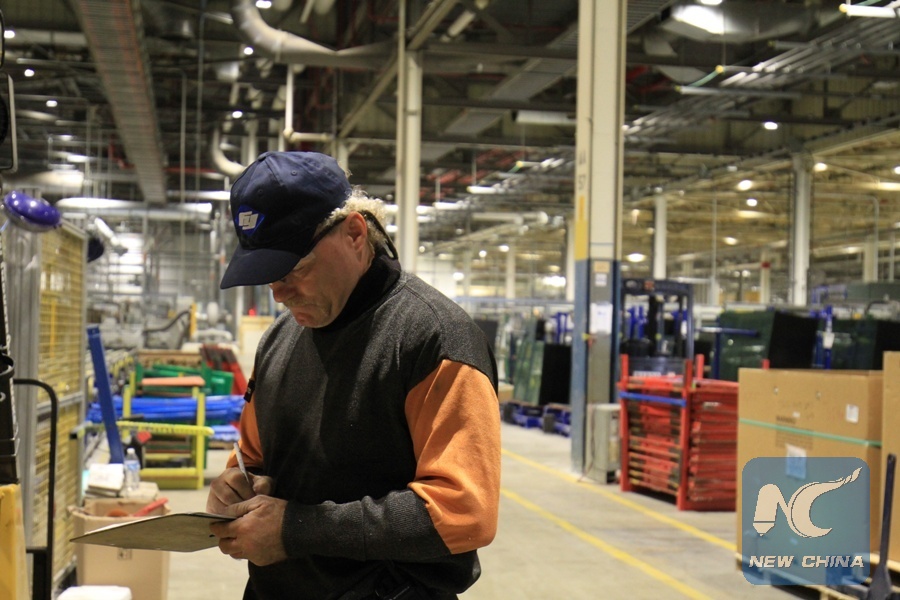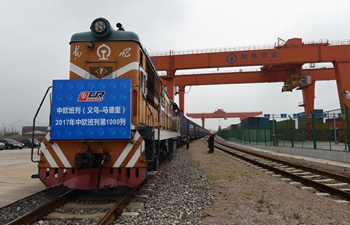
Stephen A. Orlins, president of the National Committee on U.S.-China Relations, speaks during an event for the joint release of a report on U.S.-China direct investment, in Washington D.C. May 17, 2017. Direct investment between the U.S. and China exceeded 60 billion U.S. dollars in 2016, more than any other years in history, said the report jointly released by the Rhodium Group and the National Committee on U.S.-China Relations. (Xinhua/Gao Pan)
WASHINGTON, May 17 (Xinhua) -- Foreign Direct Investment (FDI) between China and the U.S. passed 60 billion U.S. dollars in 2016, more than any other year in history, said a report jointly released by the Rhodium Group and the National Committee on U.S.-China Relations (NCUSCR).
"U.S.-China two-way FDI reached an all-time high in 2016, elevating the importance of this facet of the bilateral economic relationship," said the report.
"What used to be a one-way street - with money flowing predominantly from the United States to China - is now a two-way highway with tens of billions of dollars in annual FDI flowing in each direction," it added.
The report said the cumulative value of U.S. FDI transactions in China reached over 240 billion U.S. dollars by the end of 2016, while the cumulative Chinese FDI in the U.S. totaled 110 billion U.S. dollars during the same period.
With Chinese economy growing robustly, Chinese investment in the U.S. has expanded at record pace. In 2016, Chinese companies invested a record 46 billion U.S. dollars in U.S., tripling the amount seen in 2015 and a tenfold increase compared to just five years ago, said the joint report.
Apart from the rapid growth for two-way FDIs, the variety of investors and target industries have also expanded from traditional energy and real estate industries to consumer services and products industries, reflecting China's growing appetite for more investment in order to meet the growing domestic consumption demand.
According to the report, in contrast to the dominance of fossil fuel investments before 2013, more than 90 percent of Chinese FDI in 2016 focused on services and advanced manufacturing.

A worker records data at Fuyao Glass America's new facility in Moraine, Ohio, theUnited Stateson Oct. 7, 2016. Fuyao Glass America is part of Fuyao Industry Group Co. Ltd., a leading international manufacturer of automotive and industrial glass located in China.(Xinhua/Wang Naishui)
In 2016, real estate and hospitality, information and communications technology, entertainment, consumer products and financial services stood out as primary industries for Chinese investment in U.S., the report added.
A separate report released by Rhodium Group showed that all 50 states and 98 percent of congressional districts in the U.S. hosted operations of Chinese-owned companies in 2016.
Private investors have become the major drive for the rapidly-growing Chinese investment in the U.S, said the joint report. In 2016, about 79 percent of the total Chinese investment in U.S. were made by private sector companies.
The joint report expected the Chinese investment in the U.S. would moderate in 2017 compared to the record high in 2016, but the two-way FDI flows will remain a major component of U.S.-China economic interaction for years to come.
"Bilateral investment is a cultural as well as economic bridge between countries because it makes commerce a platform for the exchange of ideas," said Stephen A. Orlins, president of the NCUSCR.















